There was a time when farmers would look up at the sky and observe their cattle to predict the weather. When they would go out into the fields and turn over the topsoil to decide whether or not to irrigate. Nowadays, they use their smartphone to check short-term weather data in real time and analyse soil moisture values in their fields, which are often quite a distance away. Smarter farming. Or perhaps we should say that they can, if they are using AgroExact's weather app and soil moisture sensors.
This start-up based in ’s-Hertogenbosch helps arable farmers and horticulturists achieve the best possible growth for their crops. In a way that will help make agriculture future-proof.
During the growing season, checking the weather and soil data is one of Jan Straver's first tasks in the morning. Preferably at the kitchen table as he sips a cup of coffee. Straver owns an arable and livestock farm in the small village of Babyloniënbroek in Brabant (in the municipality of Altena) and, according to AgroExact's Sven Boogaard, is a ‘fanatical user’ of the app. He loves the freedom that farming gives him to make his own decisions, but also wants to know “exactly what I’m doing” and to be able to base his choices on reliable data: When should I start sprinkling? How much water do I need? What is the right time for crop protection? The wrong decision can be very expensive.
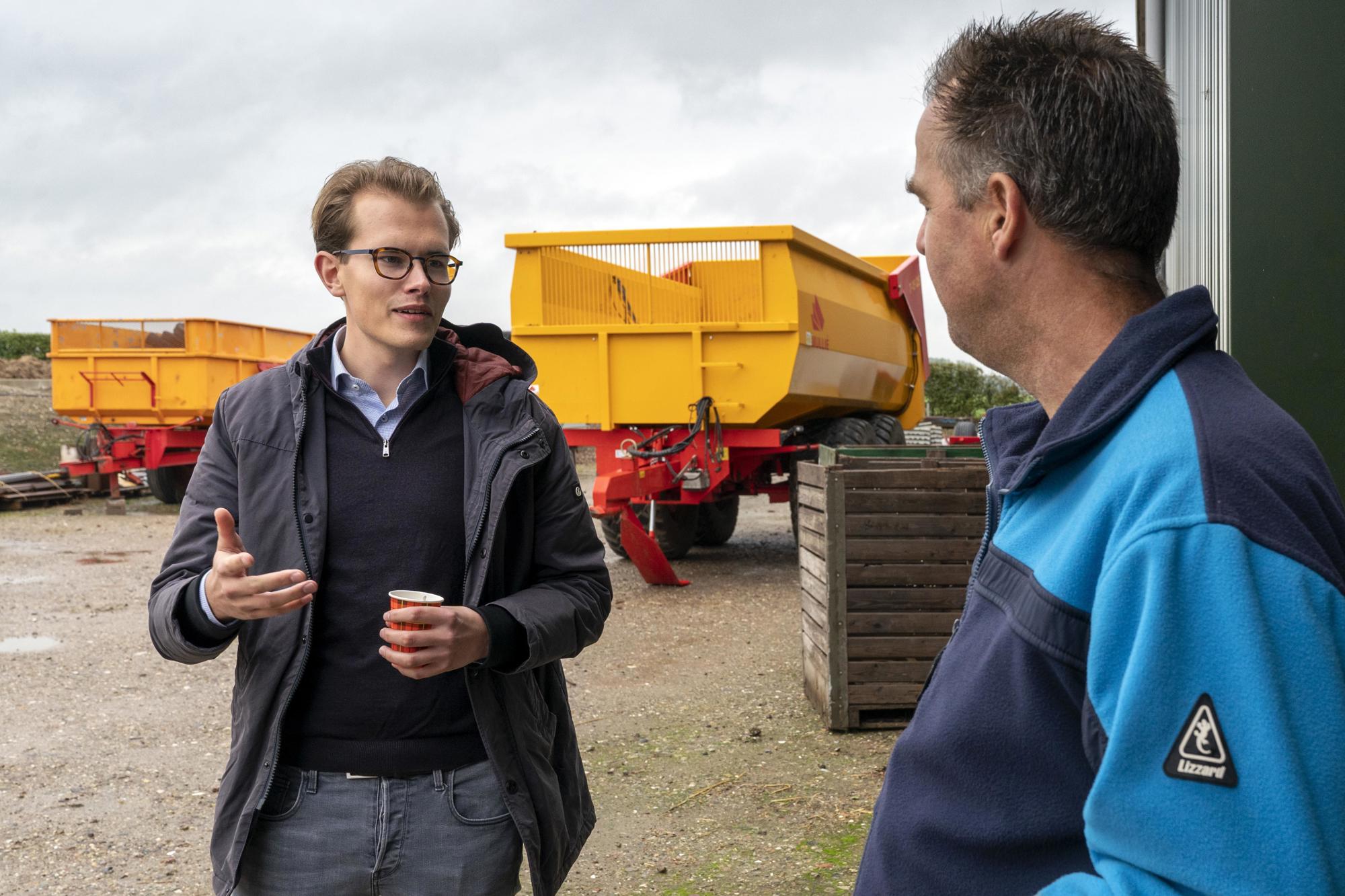
Anybody who thinks that good weather information is available everywhere these days, is wrong. The Dutch meteorological service, the KNMI, only has around thirty weather stations in the Netherlands and local weather conditions, particularly rainfall, can vary widely. For example, a heavy shower can fall in Babyloniënbroek while Uitwijk (where Jan also has a field) remains completely dry. So the strong interest shown by local farmers when Sven’s school friend Niek van Andel built his own weather station and made the information available online on his own website, was hardly surprising. When Niek told Sven at a graduation party that so many farmers were accessing the weather information on his website, the two of them decided to start a company that would specialise in selling weather data.
“Niek s first weather station, which was located in his parents’ garden, suffered from a few backyard effects”, says Sven with a broad smile. “For example, when the swimming pool had been set up for the summer, enthusiastic splashing led to a rainfall measurement. And if the wind came from a certain direction, the anemometer would stop registering because the house was in the way.” When the two lads went off to university to study - Physics with a specialisation in Meteorology in Niek's case, and Business Administration in Sven's case - the idea of starting their own company faded into the background. But after a year, the idea came bubbling to the surface again. Sven: “We found three farmers who were willing to help us develop a prototype and we simply went ahead with the project (in 2017).” The software was developed by a third school friend: Thomas Brocken, who was studying Software Science at Eindhoven University of Technology at the time.
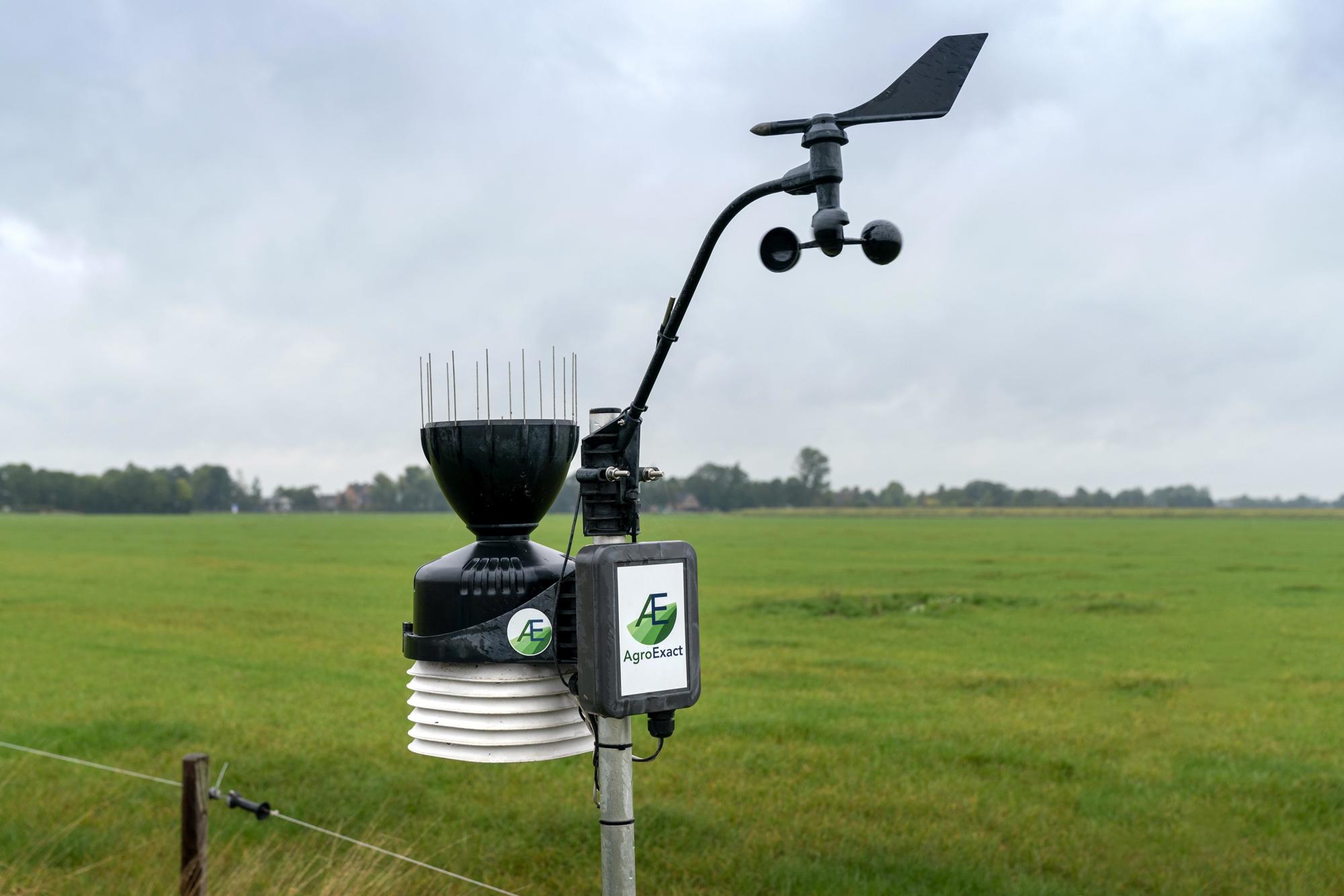
Producing the first attempt, finding customers, talking with them at length and learning from them: all this soon encouraged the three partners to start thinking bigger. “We discovered that farmers not only have fields close to their farm, they also have land in completely different places. Meaning that you must have weather stations close to all those locations in order to deliver real-time data for all their fields. In addition, we found out that they needed accurate information about soil moisture (and other data) in order to care for their crops optimally.” A speed date with potential investors during the Den Bosch Data Week 2018 event resulted in an opportunity to participate in the Investor Readiness Programme run by BOM Brabant Ventures. Sven: “That started the ball rolling. The programme taught us how to identify potential customers even more effectively and find the right solution for their problem. And led to our first injection of cash from the ‘Brabant Startup Fonds’.” They even used their student grants to help finance the business in the early stages.
Jan Straver is one of the farmers with whom Sven, Niek and Thomas talk regularly and at length. He likes to give young entrepreneurs ‘a push in the right direction’ and offered them the opportunity of presenting their ideas during theme sessions organised by his local farming association. Together with a number of colleagues, he also helped develop the app, the soil moisture sensors and the recommendations on irrigation and crop protection. Irrigation is most effective when you give the crop exactly the right amount of water at exactly the right time. Judging this based on gut feel can be completely wrong and has already cost many farmers their harvest. Sven: “After a heavy shower during a dry summer, when the temperature quickly rises to thirty degrees again, when should you start sprinkling? Our data shows that you need to do this much sooner than most farmers think.”
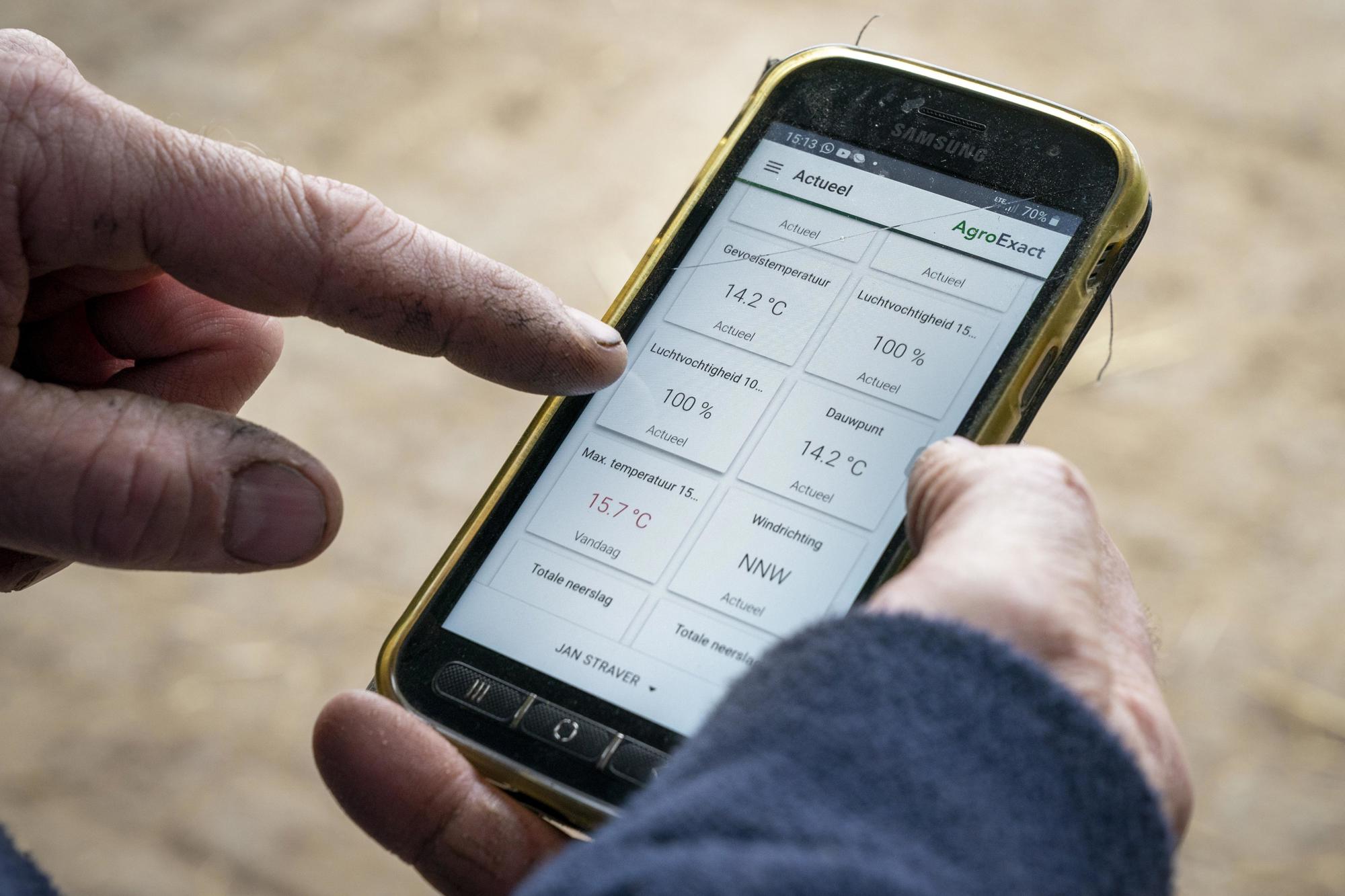
Jan has never personally lost a harvest. “I have always irrigated extensively.” However, he has achieved a noticeable reduction in his water consumption since he started using AgroExact's solutions. Because the sensors give him accurate information about the condition of the soil, but also because the app tells him when, for example, extremely heavy rainfall is expected a week later: “That means that 15 millimetres of water will be adequate in the first week.” The same applies to crop protection products. Jan: “They are expensive, so you want to use them as efficiently as possible. That’s better for the environment and spares your wallet. You used to spray crop protection products ‘depending on the day of the week’. For example, you would spray on Mondays. Now, I not only check the weather and humidity in the app, I also look at the wind speed and wind direction: in windy conditions, the crop protection products are likely to end up somewhere you don’t want them. And, above wind force 5, you’re not even allowed to spray crop protection products.”
The best way to deal with your customers is something else that the team at AgroExact have learnt from Jan and his colleagues. Sven: “Short lines of communication are important for farmers. If they can’t get quick results, they will soon stop trying because they don’t have time to waste.” Jan adds: “If a farmer calls today, he wants the solution tomorrow.”
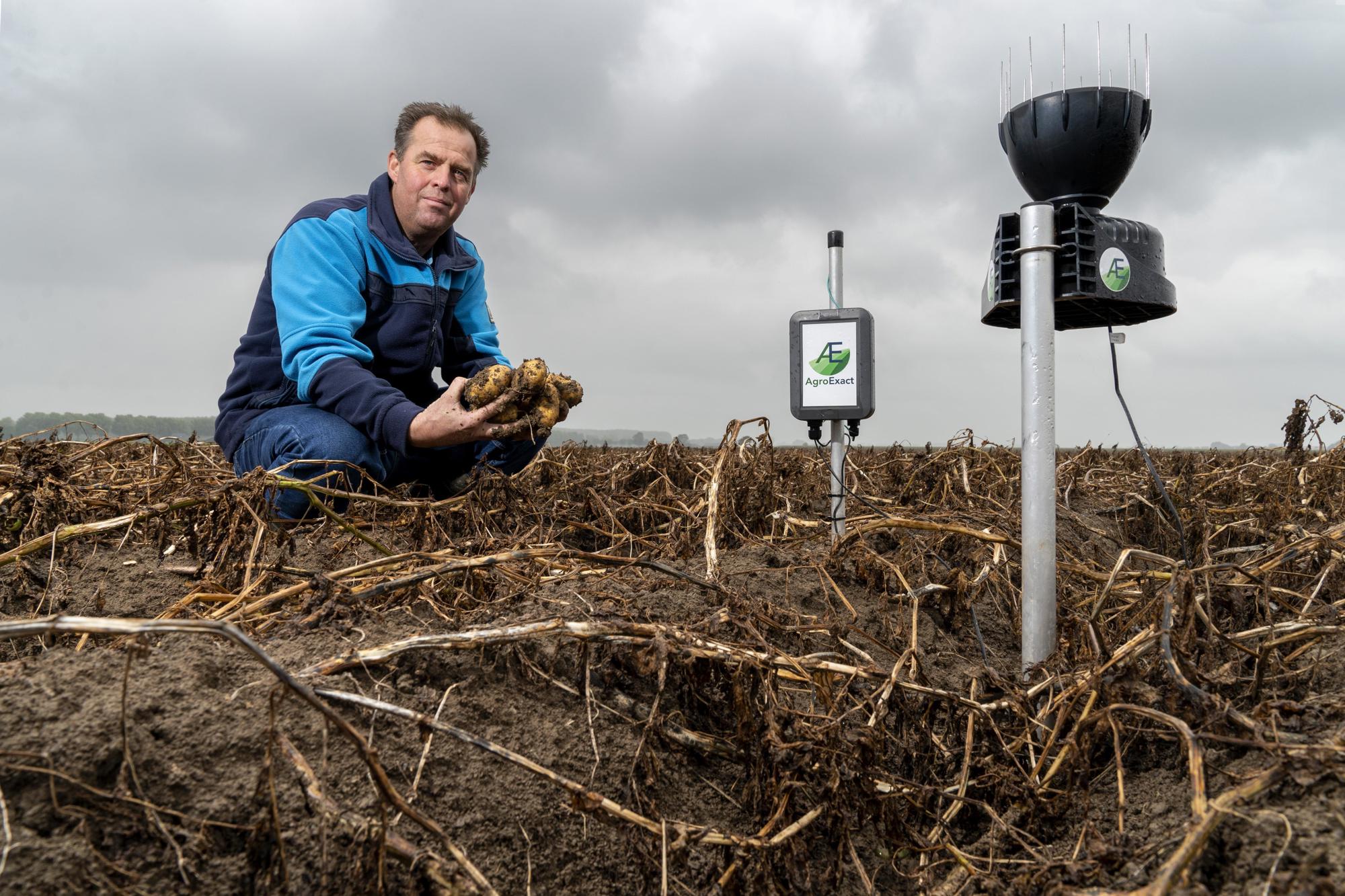
It has been three years since they produced their first prototype and AgroExact is thriving. Their network of weather stations now covers large parts of South Holland, Zeeland, Brabant and Limburg. There are currently 15 weather stations in Altena alone. A subscription to this ‘AtmoNetwerk’ gives arable farmers and horticulturists access to the data collected by five, ten or even twenty recording stations. So they do not have to purchase their own weather stations. “Many customers tell us that they are very happy with our solution and use it much more than they thought initially”, says Sven. “That gives us the motivation we need to carry on, even when we go through a slack period.” When approaching customers at first, timing was the main challenge, he explains. “Farmers are busy with their crops from the time when they sow the seeds right up to the time when they harvest them; they invest next to nothing during that period. The financial situation is more favourable after November, but even then loans (for new weather stations) still weren’t arranged in time in some cases.” However, more and more water boards are now using the network and encouraging the use of soil moisture sensors. “Who knows, maybe at some time in the future, you will only be allowed to sprinkle your crops if you have sensors.”
AgroExact's solutions mainly give Jan “peace of mind”, he tells us. “I take a week’s holiday once a year. So when the app tells me that my crops are fine, I can really enjoy my day.”
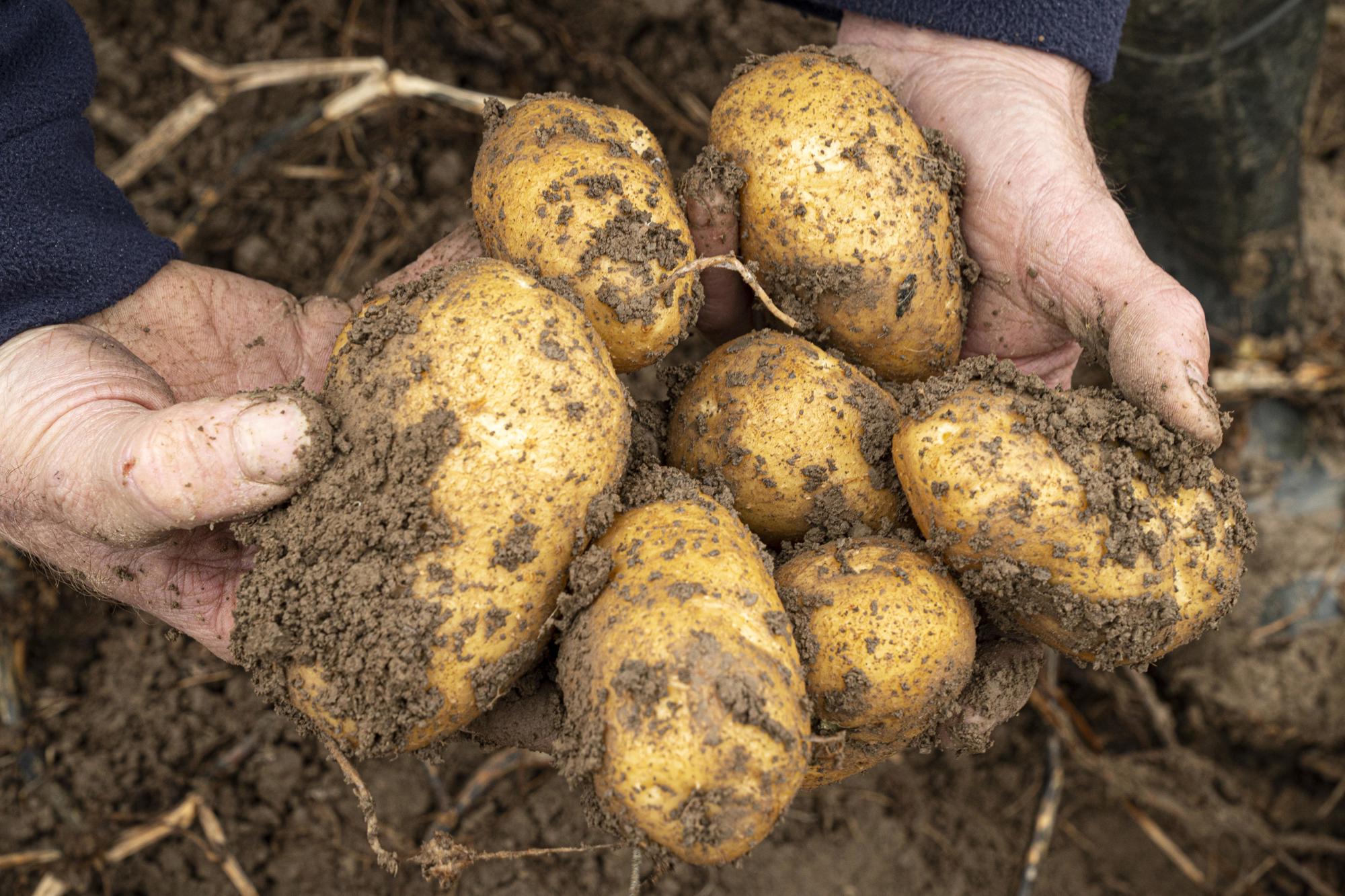
You can copy the full text of this story for free at the touch of a button